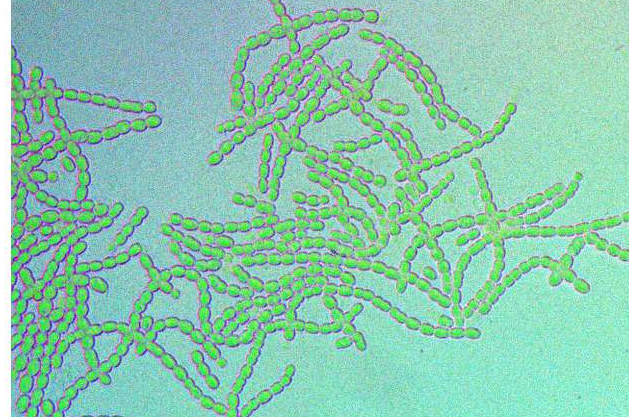Common Dolphins in the North Atlantic Are Dying Younger — Scientists Warn of a Troubling Decline

A new study has raised alarms about the rapid decline in the lifespan of common dolphins in the North Atlantic, particularly in the Bay of Biscay, a key habitat off the western coast of France. Researchers have found that female common dolphins are living around seven years less than they did in the late 1990s — a dramatic drop that could spell long-term trouble for the species and the marine ecosystems they help stabilize.
Published in Conservation Letters, the research was conducted by scientists from the University of Colorado Boulder and their collaborators in France. The findings reveal a concerning demographic shift in one of the world’s most abundant marine mammals — a signal that the health of our oceans may be declining faster than previously thought.
The Study: Tracking Lifespan Decline Through Two Decades of Data
The study, titled “Longevity Collapse in Dolphins: A Growing Conservation Concern in the Bay of Biscay”, analyzed 759 common dolphins (Delphinus delphis) that had washed up on beaches along the French Atlantic coast between 1997 and 2019. By studying growth rings in their teeth, scientists could accurately estimate each dolphin’s age at death — much like reading tree rings to determine a tree’s age.
Their results revealed a stark decline in female longevity. In the late 1990s, female dolphins typically lived to about 24 years. By 2019, that number had fallen to 17 years on average. Male lifespans were more stable but still showed fluctuations linked to environmental pressures.
The researchers also estimated that the population growth rate of dolphins in the region had dropped by 2.4% over the 22-year period. Under ideal conditions, dolphin populations might grow around 4% per year. By 2019, this rate had fallen to just about 1.6% annually — a sign that the population’s ability to replenish itself is weakening.
Why the Bay of Biscay Matters
The Bay of Biscay is a hotspot for marine life. Each winter, large numbers of common dolphins migrate there to feed on anchovies, sardines, and other small fish that thrive in its nutrient-rich waters. The area’s mild temperatures and productive ecosystem make it a key seasonal refuge for the species.
However, the bay is also one of Europe’s busiest fishing grounds. Dolphins are not targeted by fisheries, but they often become accidental victims of fishing nets, a phenomenon known as bycatch. According to previous studies, an estimated 6,900 dolphins were killed as bycatch in the Bay of Biscay in 2021 alone — from a seasonal population of about 180,000.
That means roughly 4% of the population could be dying each winter due to fishing activities. Most dolphins caught in nets do not survive, and such losses, compounded over years, can seriously disrupt population balance.
Rethinking How We Measure Population Health
For years, scientists believed that the Bay of Biscay’s dolphin population was stable. Traditional methods — such as counting dolphins from planes or ships — suggested that numbers had not changed dramatically.
But as this new study points out, abundance counts can be misleading. Dolphins constantly move between regions, and surveys often fail to detect subtle demographic changes. A population may appear stable in numbers even as its members live shorter lives and produce fewer offspring.
The researchers used a new approach: analyzing stranded dolphins as indicators of wider population trends. Although stranded dolphins represent only about 10% of all dolphin deaths, their ages and causes of death can provide valuable insight into overall survival rates and reproductive health.
This method allows scientists to spot early warning signs of population stress before visible declines occur. For animals that live long and reproduce slowly, such as dolphins, this kind of early detection is crucial — because once numbers start falling, recovery can take decades or may never happen at all.
Evidence of a Worrying Trend
By examining the ages of stranded dolphins, scientists saw a clear shift toward younger mortality. The proportion of adult females reaching older ages dropped significantly after 1997. This suggests that environmental or human pressures are shortening their lifespan.
The reduced longevity also corresponds with lower reproductive rates. Dolphins typically give birth to one calf every few years, so even small reductions in lifespan can have large effects on population growth.
If the observed trend continues, the researchers warn that the population’s growth rate could fall below zero, meaning the population would begin to decline outright. Once that happens, recovery becomes extremely difficult because dolphins reproduce slowly and depend on stable environmental conditions.
Government Measures and Potential Solutions
In response to growing concern, the French government began implementing new protective measures in 2024. Fishing in parts of the Bay of Biscay is now banned for one month every January, the peak of the dolphins’ seasonal presence, to reduce bycatch.
While this closure has shown some positive results, scientists say it may not be enough. Dolphin migration timing can vary from year to year depending on ocean temperature, food availability, and currents. If dolphins arrive earlier or later than January, a fixed closure period might miss the overlap with fishing activity.
Experts suggest that a flexible closure system, one that adjusts based on real-time dolphin tracking data, would better protect the animals. Such adaptive management strategies could ensure that fishing restrictions coincide precisely with the dolphins’ presence in the area.
A Bigger Picture: What’s Happening Beneath the Waves
The common dolphin (Delphinus delphis) is one of the most widespread and abundant cetaceans in the world, with an estimated 6 million individuals inhabiting tropical and temperate oceans. Their global abundance often gives the impression that the species is secure — but regional declines like this one show that even “common” species can be at risk when local conditions deteriorate.
Dolphins play a vital ecological role as top predators. They help regulate fish populations, preventing smaller species from overpopulating and depleting plankton. When dolphin numbers drop, the entire marine food web can be affected. Fish populations can explode unchecked, consume too much plankton, and eventually disrupt the balance of the ecosystem — a chain reaction that can destabilize the ocean environment.
The researchers stress that the issue is not limited to common dolphins. Other North Atlantic cetaceans, such as harbour porpoises and bottlenose dolphins, may also be facing similar pressures. Studying these species together could improve conservation strategies across the region.
What Might Be Driving the Shorter Lifespans?
While the study does not pinpoint a single cause, several factors likely contribute:
- Bycatch: Dolphins getting caught in fishing gear is a major and ongoing source of mortality. Even those that escape can suffer from stress, injuries, or disrupted feeding patterns.
- Pollution: Chemical contaminants, plastics, and heavy metals accumulate in marine food chains. As top predators, dolphins are exposed to high levels of these toxins, which can harm their immune and reproductive systems.
- Climate Change: Rising sea temperatures and shifting ocean currents alter the distribution of prey fish like sardines and anchovies, forcing dolphins to travel farther and expend more energy to find food.
- Noise Pollution: Intense underwater noise from shipping, sonar, and offshore construction can interfere with dolphins’ echolocation, navigation, and communication.
- Decreased Prey Availability: Overfishing and environmental shifts may be reducing the abundance of small fish, making it harder for dolphins to sustain themselves and their young.
Each of these stressors alone can affect survival, but together they may be creating a cumulative impact that shortens lifespans and weakens overall population health.
Why Lifespan Data Matters
Monitoring how long dolphins live — not just how many exist — provides a clearer picture of population health. Lifespan reflects cumulative exposure to threats and environmental stress. A shorter average lifespan suggests that more dolphins are dying younger, often before reaching their full reproductive potential.
Traditional population counts, while useful, can miss these subtler signs of decline. For long-lived species, demographic data like age structure, survival rates, and birth frequency are better indicators of whether the population is truly sustainable.
This shift in research approach — from simple abundance surveys to demographic monitoring — could revolutionize how marine conservation is done. It allows scientists and policymakers to act before populations collapse, rather than reacting after the fact.
The Path Forward
The message from this research is clear: being abundant doesn’t mean being safe. Even species numbering in the millions can face extinction risk if survival and reproduction fall below sustainable levels.
For the Bay of Biscay’s dolphins, conservation measures need to focus on reducing human impacts, especially bycatch, and adapting fishing practices to align with ecological realities. Greater international cooperation among European nations bordering the North Atlantic will also be crucial, since dolphins migrate across large oceanic ranges.
Globally, the study serves as a wake-up call to monitor the health of other dolphin populations and marine mammals using similar demographic techniques. The approach could help detect early signs of trouble in species that might otherwise seem stable.
Protecting dolphins ultimately protects the entire marine ecosystem, including the fish, plankton, and coral systems that humans also depend on. These animals are not only charismatic symbols of ocean life but also essential indicators of ocean health.
Learning More About Common Dolphins
The short-beaked common dolphin is one of the most recognizable marine mammals, known for its sleek body, distinct yellow-tan hourglass pattern on its sides, and social behavior. They are incredibly fast swimmers, capable of reaching speeds over 35 km/h (22 mph), and often travel in large groups called pods, sometimes numbering hundreds of individuals.
Common dolphins are found in warm and temperate seas worldwide, from the Atlantic and Pacific Oceans to the Mediterranean and Black Seas. They primarily feed on small schooling fish like sardines, anchovies, and mackerel, often using cooperative hunting techniques to herd fish together.
They communicate using a wide variety of clicks, whistles, and burst pulses, which are essential for navigation and coordination within pods. Their intelligence, playfulness, and adaptability have made them one of the most studied dolphin species.
However, despite their adaptability, they remain vulnerable to human pressures — particularly industrial fishing, pollution, and habitat degradation. The new findings from the Bay of Biscay show that even the most resilient species can falter when ecosystems become unbalanced.





